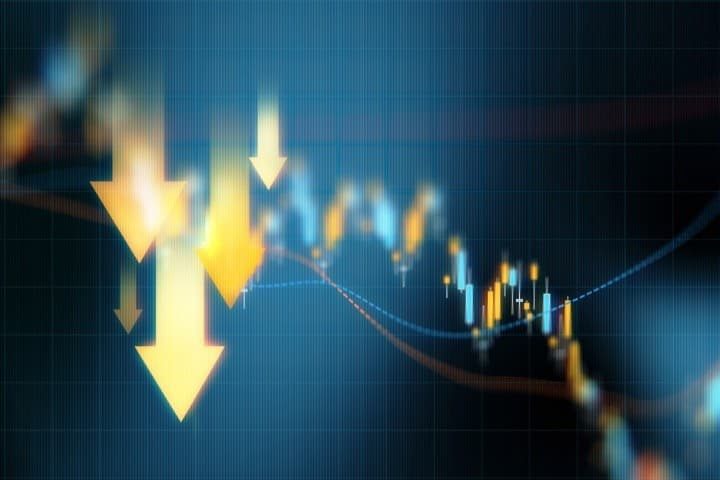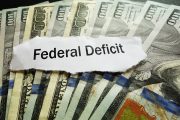
Doug Noland, a highly regarded financial analyst, wrote in Seeking Alpha on New Year’s Eve: “It had all been a grand illusion: the Fed [the Federal Reserve System] and free ‘money’ [through government handouts] generat[ed] a permanent plateau of prosperity. The year saw inflationism’s inescapable scourge of wealth destruction and misery begin to be revealed.”
On paper, investors saw their accounts lose more than $30 trillion (that’s trillion, with a T) in 2022. There was no place to hide. Said Noland: “The ‘everything Bubble’ morph[ed] into the everything bust.” The Dow Jones Industrial Average (the “Dow”) dropped by 9 percent; the broader market index, Standard & Poor’s 500, lost 20 percent; and the tech-heavy NASDAQ lost a third of its value. Bond funds lost between 15 and 20 percent, and Bitcoin dropped 64 percent.
Popular names that had led the parade for the past three years gave back most of those gains: Tesla stock collapsed 65 percent, Facebook (META) declined 64 percent, Netflix dropped 51 percent, Amazon 50 percent, Alphabet/Google 39 percent, Microsoft 29 percent, Apple 27 percent, Disney 44 percent, and Nike 30 percent.
Seven hedge funds — those touted by their purveyors as providing an alternative hiding place — went bankrupt, with the one making the most headlines being FTX, the cryptocurrency empire that some are now calling a giant Ponzi scheme and a money-laundering Ukrainian/Democrat slush fund.
FTX’s founder, Sam Bankman-Fried (aka SBF), will start the new year under a court-ordered detention in his parents’ home on a $250 million bond. He faces eight federal counts of wire fraud, money laundering, and conspiracy, carrying a maximum of 115 years in federal prison.
The decline in the value of bonds and stocks turned 2022 into the worst year since 1871.
The cause of all this was, naturally, the combination of federal spending enabled by the unholy alliance between the Federal Reserve System and the U.S. Treasury. Republicans and Democrats alike are guilty of spending without limit, utilizing the new economic principle called MMT, or Modern Monetary Theory.
This “other worldly” fantasy is defined by Investopedia:
Modern monetary theory (MMT) is a heterodox macroeconomic supposition that asserts that monetarily sovereign countries (such as the U.S.) … which spend, tax, and borrow in a fiat currency that they fully control, are not operationally constrained by revenues when it comes to federal government spending.
Put simply, modern monetary theory decrees that such governments do not rely on taxes or borrowing for spending since they can print as much money as they need and are the monopoly issuers of the currency.
Since their budgets aren’t like a regular household’s, their policies should not be shaped by fears of a rising national debt.
Translation: Seized by politicians as the way to print the way to utopia, the resulting inflation is then to be reined in by raising interest rates.
In 2022, the fraud of MMT was in full view. By pumping the money supply (allegedly to keep the economy from cratering during the plandemic), consumers and businesses went on spending sprees, causing supply chain disruptions. The money supply, as measured by the Fed’s M2 indicator, rose 42 percent in the three years that ended in March.
When the Fed then tentatively started tapping the brakes (i.e., raising interest rates) and beginning to reduce its now enormous balance sheet, the game was over. The stock market peaked in November 2021, and has been coming off its “high” ever since.
As Noland noted:
The year [2022] marked the end of a multi-decade cycle of ever-looser monetary policy, declining [interest rates], [and] inflating financial asset prices [i.e., stocks and bonds].
It was, in other words, the year that Reagan economist Herb Stein was proved right: when something cannot continue, it will stop.
What about 2023?
Jeffrey Hirsch has been studying seasonal and historical patterns for decades. In his Stock Trader’s Almanac, he says:
The 2022 bear market will likely bounce along sideways, testing [its] June 2022 lows, reaching a bear market low in late Q3 [July-August-September] or early Q4 [October-November-December] … in typical midterm bottom fashion.
[W]e expect a new bull market to commence … that takes the market to new highs in the Pre-Election Year 2023.
The list of reasons such a sunny outlook may get derailed is long: drought, floods, fires, hurricanes, heat waves, deep freezes, and food supply issues. The number of people still “not in the labor force” is five million higher than at pre-Covid levels, and job openings are still more than three million higher than before the start of the plandemic.
And this list doesn’t include the potential for a European war; the flood of illegals pouring into the country looking for handouts, health care, and education for their children; election fraud; energy supply constraints; and so on.
The real danger is that weak-kneed Republicans now in control of the House, headed up by RINO Kevin McCarthy, will not change anything of substance, but instead allow the federal government to continue to ignore constitutional boundaries. The threat of an imploding economy is overshadowed by the increasing threat of an exploding government that runs everything into ruin.



